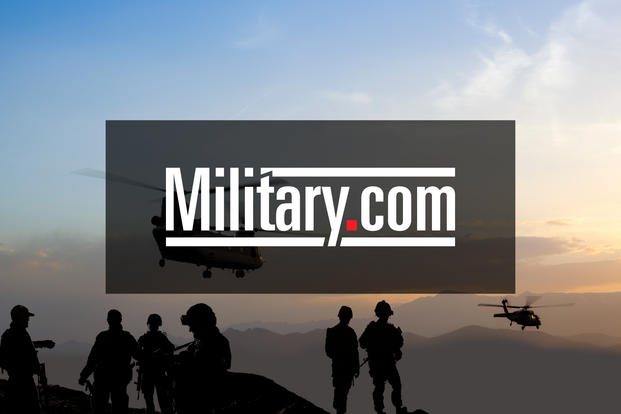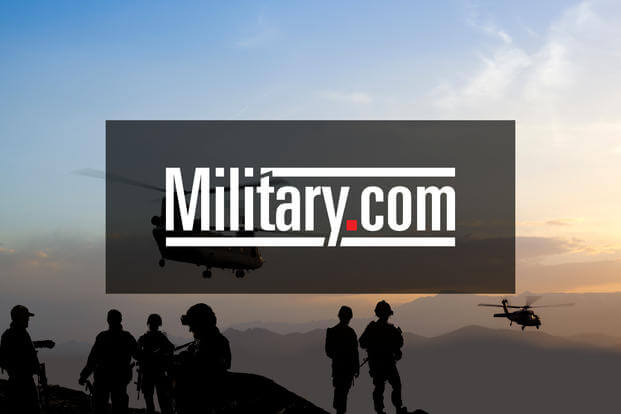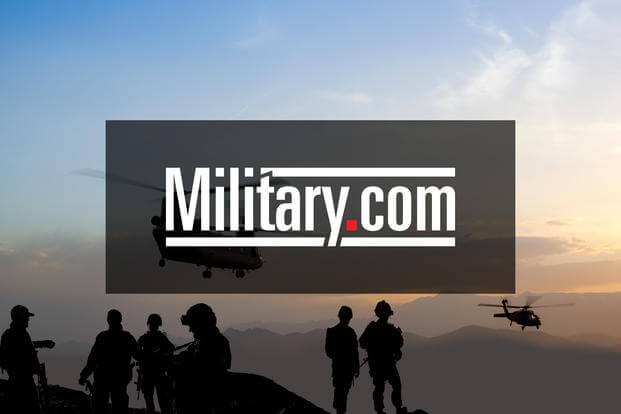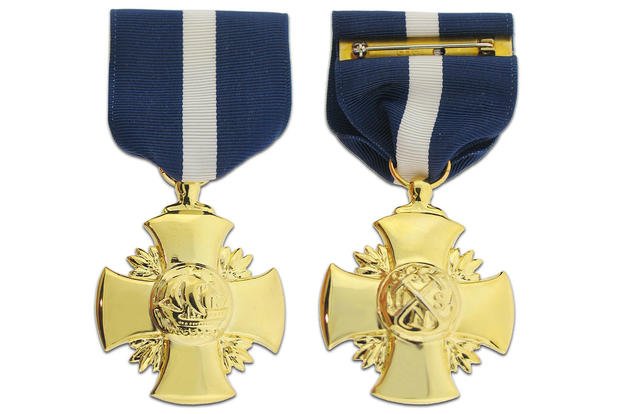Minutes after Tate Jolly arrived at the diplomatic post in Benghazi, Libya, a mortar hit the compound where an ambassador and another American had been killed and dozens more were trapped.
The Marine gunnery sergeant was one of only two U.S. troops with a small task force that rushed to respond to what quickly became clear was a coordinated attack on the U.S. State Department facility.
It was a remarkable mission. The closest military backup was hours away, which later led to fierce debate about how U.S. troops should be postured to protect Americans and diplomatic posts overseas.
"There was no one even remotely close to being able to go and get them in North Africa," a source familiar with the operation planning said. "The nearest airplanes were hours away and the nearest ground troops a day away or further."
The source spoke under the condition of anonymity to talk freely about the Sept. 11, 2012, incident, which remains a topic of controversy in Washington seven years later.
The scene was chaotic when the team arrived, and they quickly tried to restore order. There were nearly 30 panicked people who needed to be evacuated quickly, but the compound was under fire from multiple sides.
"Unfortunately, it was not a whole lot of offense; it was a whole lot of just holding guys off as long as they could to try and get out," the person familiar with the mission said.
Jolly, who declined a request for an interview, would ultimately be awarded the Navy Cross for his heroism there. The soldier with him, Master Sgt. David Halbruner, received the Army's Distinguished Service Cross. The valor awards are exceeded only by the Medal of Honor.

Little has been known about Jolly’s actions in Benghazi. There was no public ceremony when he received his valor award and, until recently, his name has not been publicly tied to the mission in media reports.
His hometown paper in North Carolina, the Wilkes Journal-Patriot, recently reported that the 36-year-old who'd graduated from high school about 90 miles north of Charlotte was the Marine who'd gone above and beyond to save other Americans. Jolly recently retired as a master sergeant.
According to testimony, public documents and the person familiar with his actions, Jolly was calm in the face of deadly chaos. He and Halbruner are credited with saving numerous lives that day.
With a rifle strapped to his back amid an onslaught of mortars and machine-gun fire, Jolly tended to the wounded, at one point throwing a man onto his back and shuffling him down a ladder amid a barrage of enemy fire. He helped some get back into the fight and provided vital care to others with life-threatening injuries.
Here's how then-Gunnery Sgt. Jolly helped get other Americans to safety during a situation that caused a years-long political firestorm thousands of miles away in Washington, D.C.
A Delta Force Marine
Jolly, an infantry assault Marine, was assigned to a Delta Force detachment in Libya at the time of the Benghazi attack. It's rare, though not unheard of, for Marines to join the elite Army special-operations teams.
The Marine had deployed to Iraq twice before joining the secretive counterterrorism force, spending about five years carrying out clandestine missions before the Benghazi attack and another five after, according to information about his career obtained by Military.com.
He racked up more than a dozen total deployments with Delta Force.
The Navy Cross Jolly received for his actions in Benghazi was his fourth valor award. He has two Bronze Stars with combat "V" devices -- one of which he earned for undisclosed reasons during his time with Delta Force, and a second from a 2004-2005 deployment to Ramadi, Iraq.
Jolly also earned a Navy Commendation Medal with combat distinguishing device and a Purple Heart for injuries sustained during that deployment.
According to his award citations, Jolly repeatedly braved enemy fire in Ramadi to help take out an enemy sniper who had ambushed a government center. He received the Navy Commendation Medal for risking his life to destroy roadside bombs when an explosive ordnance disposal team couldn't reach his unit.
On the 11th anniversary of the 9/11 attacks, Jolly was about 600 miles away from Benghazi in Tripoli -- roughly the same distance between Chicago and Washington, D.C. Since Jolly and Halbruner were some of the only troops in-country, the operation was coordinated not by U.S. Africa Command, but the CIA.

Team Tripoli, made up of Jolly, Halbruner and five others, arrived in Benghazi at about 1:30 a.m. That was about four hours after the attack began, and two since Ambassador Christopher J. Stevens had last been seen alive.
The team was led by Glen Doherty, a Global Response Staff (GRS) security officer and former Navy SEAL, who was later killed. He was Team Tripoli's medic.
The plan, according to the person familiar with the mission, was to leave the airport and head to the hospital, where they believed Stevens was being treated. When they found out Stevens had died, the first ambassador to be killed in the line of duty since 1979, the team headed to the consulate to bolster the diplomatic security personnel and GRS, a group of private military contractors who were fending off the attackers.
"It could've gone really, really bad," said the source familiar with the mission. "It could've become 30 American hostages in North Africa. There were seven shooters going in to protect people who don't shoot for a living."
By the time they arrived, Sean Smith, a State Department foreign service officer, had also died. It was still dark, just after 5 a.m., according to a congressional timeline of the attack. Within minutes, the first mortar hit.
The attacks continued, with one witness estimating there were as many as 100 insurgents spotted surrounding their location in 20- or 30-man groups. It was a skilled enemy, one of the troops there later told members of Congress.
"It's not easy ... to shoot inside the city and get something on the target within two shots -- that's difficult," the witness testified. "I would say they were definitely a trained mortar team or had been trained to do something similar to that.
"I was kind of surprised," the service member added. "... It was unusual."
They were there a matter of hours, but at times witnesses said the team feared they wouldn't make it out alive. It began to "rain down on us," one of them told lawmakers.
''I really believe that this attack was planned," the witness said. "The accuracy with which the mortars hit us was too good for any regular revolutionaries."
In total, six 81-millimeter mortars assaulted the annex within a minute and 13 seconds, a congressional report on the attack states. Doherty and Tyrone Woods, another former SEAL with the GRS, didn't survive.
Dave Ubben, a State Department security agent, and Mark "Oz" Geist, another GRS member, were badly hurt. The men were defending the compound from the rooftop, determined to make it look like they had a lot more firepower than they actually did.
"There was a lot of shooting, a lot of indirect fire and explosions," the source with knowledge of the response said. "It was just guys being really aggressive and doing a good job at making it seem like their element was bigger than it was, like they were less hurt than they were."
Ubben -- who'd testified before a federal court in 2017 that he took shrapnel to his head, nearly lost his leg, and had a grapefruit-sized piece of his arm taken off -- was losing blood fast. Geist also had a serious arm injury that needed immediate attention.
Jolly and Halbruner were determined to save them. Amid the fight, they were tying tourniquets to the men's bodies.
Ubben is alive because Jolly helped move him from the rooftop to a building where diplomatic personnel were hunkered down. Gregory Hicks, who became the acting chief of mission after Stevens died, later described how the gunny did it during a congressional hearing.
"One guy ... full of combat gear climbed up [to the roof], strapped David Ubben, who is a large man, to his back and carried him down the ladder, saved him," Hicks said.
Jolly and Halbruner also went back out to the rooftop to recover the bodies of the fallen.
"They didn't know whether any more mortars were going to come in. The accuracy was terribly precise," Hicks said. "... They climbed up on the roof, and they carried Glen's body and Tyrone's body down."
It was for Jolly's "valorous actions, dedication to duty and willingness to place himself in harm's way" to save numerous unarmed Americans' lives that he earned the Navy Cross, according to his citation.
Bracing for the Worst
That attack was traumatic for many of the civilians trapped inside one of the buildings, according to the person with knowledge of the operation. They'd lost their ambassador and another colleague, and they had no experience being caught in a life-and-death combat situation.
Once Jolly and Halbruner brought the injured men in from off the rooftop, the diplomatic staff helped treat their wounds, according to the source familiar with the situation. It gave them a mission as the onslaught continued outside.
As the sun came up, the remaining team members worried that terrorists would overtake the facility. First believed to be the work of the Benghazi-based Ansar al-Sharia group, the attack was coordinated by several networks in the region, including al-Qaida affiliates.
Throughout the night, the Americans had the advantage of night vision, the person familiar with the mission said. In the daylight, it could quickly become an even playing field.
Surprisingly though, it got quieter. They gathered inside one of the buildings and formed an evacuation plan to move the diplomatic staff to the airport and eventually out of Benghazi.
"[They had to talk about] things like, 'What happens if they came under attack on the way out? Do you know where to go if you are separated from the group or are being shot at?'" according to the person familiar with the plans.
They prepared for the worst: that as the convoy left the compound, they'd be ambushed, everyone would panic, and the terrorists would take hostages. But they made it to the airport without issue and, by 7:31 a.m., the first plane with survivors took off for Tripoli.
"Who would've thought seven people could go into Benghazi and get more than 25 people out? Especially without traditional military support?" the person familiar with the mission said. "... But you can do a lot if you're determined and have no other choice."
The Defense Department and former Secretary of State Hillary Clinton later faced a host of criticism over their response to the attack. Critics called it too slow -- a congressional investigation finding that despite President Barack Obama and former Defense Secretary Leon Panetta clearly ordering the military to deploy response forces, none were sent until almost eight hours after the attacks began.

Former Joint Chiefs Chairman Gen. Martin Dempsey was asked to explain why he hadn't dispatched F-16 Fighting Falcon fighter jets from Italy. He told lawmakers it would've been "the wrong tool for the job."
The Marine Corps, the nation's go-to crisis-response force, has been particularly responsive in the aftermath of the attack. Since there aren't enough amphibious ships to stage Marines everywhere they'd like to be at sea, they've set up land-based crisis-response forces built to respond to emergencies quickly. Those units include up to 2,200 personnel, along with aircraft and logistics capabilities.
Those units are now based in Europe, the Middle East and Central America. Those assigned to Africa and the Middle East have fielded several State Department requests to evacuate embassy personnel or shore up security when intelligence has indicated a high risk for attack.
The Marine Corps and State Department have also bolstered the number of embassy guards placed at diplomatic posts around the world, standing up dozens of new detachments that previously did not have military personnel.
It was a tragedy to see a U.S. ambassador and three other Americans killed in Benghazi but, sadly, it sometimes takes an awful situation to get the attention of those in charge of policy, the person familiar with the response said.
"It was a bad situation, but a lot of priorities changed after this tragedy that would otherwise never have gotten fixed."
-- Gina Harkins can be reached at gina.harkins@military.com. Follow her on Twitter @ginaaharkins.













